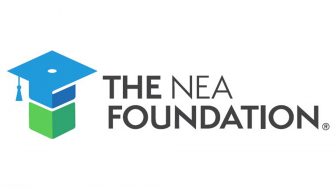February/ March 2020 Ohio Schools
- COVER STORY: Language of Learning – Ohio School for the Deaf
- FEATURE:
- Maumee students send help to Australian wildlife affected by fires
- Educators and students honor public education in Ohio at statehouse event
- London Middle School campaign empowers students while fostering positive school climate where everyone feels valued
- MAKING THE GRADE: OEA members receive NEA Foundation grants to boost student learning
- SUBJECT MATTER: 2020 Summer Leadership Academy, OEA/OAESP Annual Statewide Conference
- LEGISLATIVE UPDATE
Moved recently? Contact the OEA Member Hotline to update the address on file at 1-844-OEA-Info (1-844-632-4636) or email, membership@ohea.org. Representatives are available Monday-Friday, from 8:30 a.m. to 6 p.m. | OhioSchools — Past Issues
![]()
![]() Oh Yes, We’re Social — Join the Conversation!
Oh Yes, We’re Social — Join the Conversation!
![]()
December 2019/January 2020 Ohio Schools
- COVER STORY: Empowering student voices — 2020 Ohio Teacher of the Year
- FEATURE: Ohio State School for the Blind
- MAKING THE GRADE:
- OEA Educational Foundation announces grants
- Apply now for OEA awards and scholarships
- Are you fiscally fit
- Enter OEA’s 21st Annual Student Art Contest
- LEGISLATIVE UPDATE
- RETIREMENT SYSTEMS UPDATE
Moved recently? Contact the OEA Member Hotline to update the address on file at 1-844-OEA-Info (1-844-632-4636) or email, membership@ohea.org. Representatives are available Monday-Friday, from 8:30 a.m. to 6 p.m. | OhioSchools — Past Issues
![]()
![]() Oh Yes, We’re Social — Join the Conversation!
Oh Yes, We’re Social — Join the Conversation!
![]()
Norwood T.A.’s Leila Kubesch Named 2020 Ohio Teacher of the Year

State Superintendent of Public Instruction Paolo DeMaria surprised students and staff at Norwood Middle School this week by announcing that Leila Kubesch was selected as Ohio’s 2020 teacher of the year.
Kubesch teaches Spanish and English as a second language at Norwood Middle School.
School officials also said Kubesch encourages students to participate in service learning projects to build confidence and grow their desire to learn. For example, students have worked for a local cable television station to create a talk show involving community members who discuss various topics with the students.
Kubesch and her students were awarded the Ohio Education Association Media Award for Public Service for that project. They also received a grant to expand their studio.
During the 2017-18 school year, Kubesch secured a grant for a performing arts project. They created a display, laminating their dreams and hanging them on burlap sacks, with cutouts of hands forming a border. The display stretched more than 100 feet, and a special exhibit featuring the project opened at the National Underground Railroad Freedom Center in Downtown Cincinnati. A poster by the exhibit explained how burlap was used in North Africa – as clothing, rugs and sacks.
Click here to learn more about Kubesch and the Ohio Teacher of the Year Program.
October/November 2019 Ohio Schools
- COVER STORY: Culture of Caring — ReynoldsburgEA, Using Restorative Practices
- FEATURE: OEA 2019 Summer Academy
- MAKING THE GRADE:
- NEA Foundation names Columbus educator (and OEA Educational Foundation recipient) as an awardee.
- LovelandEA teacher selected as a 2020 NEA Foundation Global Learning Fellow
- Ohio’s new ‘Stop Bullying’ license plate
- 2019 OEA Minority Leadership Training Program
- OEA support of Crayons to Classrooms effort
- LEGISLATIVE UPDATE: State report cards continue to mislead
- RETIREMENT SYSTEMS UPDATE
Moved recently? Contact the OEA Member Hotline to update the address on file at 1-844-OEA-Info (1-844-632-4636) or email, membership@ohea.org. Representatives are available Monday-Friday, from 8:30 a.m. to 6 p.m. | OhioSchools — Past Issues
![]()
![]() Oh Yes, We’re Social — Join the Conversation!
Oh Yes, We’re Social — Join the Conversation!
![]()
A Seat at the Table or a Broken Promise?
OEA Blogger Julie Holderbaum, Minerva EA/OEA
Campaigning politicians often promise teachers a “seat at the table.” However, once the election is over, Ohio’s lawmakers have done too little to engage teachers in conversations about education policy.
Take, for example, the new graduation requirements passed into law via the state budget.
Many educators have been asking for a dialogue about graduation requirements for years now. Instead, legislators kept putting band-aids on the unrealistic requirements, rather than having a serious conversation with teachers about meaningful revisions.
This summer, the legislature ripped off the band-aid and passed into law what they call a permanent solution. Ohio Excels, a group primarily consisting of business leaders, created a new concoction of graduation requirements and the Ohio legislature gobbled it up.

The only education voices associated with the group seem to have been the Ohio 8 Coalition, an alliance of Ohio’s eight urban school districts. The large urban districts have unique needs and it makes sense for them to have joined together to address the challenges they face.
However, Ohio’s 612 public school districts are quite diverse, and the Ohio 8 represents only a small fraction of them, fewer than 1.3%.
The legislators who voted to accept the Ohio Excels plan have touted these new requirements, saying they reduce testing since only two Ohio state tests are required to graduate.
Don’t be fooled. There is no reduction in testing.
Kids who don’t pass the required tests the first time must retake them, and the other non-required state tests must still be offered since they are a way to prove “readiness” to graduate.
Real teaching and learning will be interrupted by test-taking and re-taking, just as it is now, and our curriculum must still focus on how to pass the state tests.
Under the new plan, high school seniors must show “competency” by earning certain scores, yet to be set, on the Algebra I and ELA II state tests. If they cannot earn the competency scores, which are being determined not by teachers, but by the Ohio Department of Higher Education and the Governor’s Office of Workforce Transformation, seniors have three additional options to show competency:
- they can earn proficient scores on the WorkKeys exam or earn other industry credentials — an option only truly available to kids who attend a vocational or career tech school;
- they can complete college coursework through the College Credit Plus program – an option most likely not realistic for kids who cannot earn passing scores on the state tests; or,
- they can enlist in the military.
Seniors show “readiness” by earning two additional “seals”, one of which is defined by the state and one of which can be locally designed and defined.
The locally defined seals will not be an obstacle for most students since they can be earned by participating in clubs, volunteering in the community, or demonstrating skill in the performing or fine arts.
The state-defined seals are much more daunting and most revolve around earning certain scores on tests — the ACT or SAT, AP or IB, the other state tests in American History, Government, or Biology; or, a very rigorous test in World Languages. There is only one other option to show readiness — join the military. Enlisting in the military is honorable and admirable, and it has been an excellent choice for many of my former students. However, it should be just that – a choice.

The timing of the state tests only exacerbates the problem.
In our district and many others, students must apply to the local career tech school by January of their sophomore year, so that the tech school has time to read applications and make program placements. However, students take the required ELA II state test for the first time in April of their sophomore year. Results are not available until late June.
I teach several juniors this year who are not going to the career tech school, and who found out this summer that they have not met the score requirements on the tests. They are now in the very dire situation of having no other choice but to join the military if they cannot raise those scores when they retake the test this year.
Not only did legislators overlook the fallout of their plan on Ohio’s students and their families, they failed to think about the mess schools are left to deal with by having THREE graduation plans in place. This year’s seniors can graduate under the band-aid plan passed last year, sophomores and juniors must meet the pre band-aid requirements, and the freshmen fall under the new plan. If older students can’t meet their requirements, they can try to meet the new ones.
Can you imagine explaining this convoluted mess to families, especially those with more than one child in high school?
The Ohio Excels motto, “Every Student, Every Day, Everybody’s Business,” is similar to my own school district’s motto, “Every Student, Every Minute, Every Day.”
In our motto, we don’t mention business because education is not a business and kids are not products moving along an assembly line. I suppose the Ohio legislature could justify accepting this business group’s plan by arguing that because graduates will enter the workforce in the near future, businesses should have some say in what kids should be able to do in order to earn a diploma. However, I would argue that educators who are working with kids in the immediate present should have an even louder voice in those decisions.

Perhaps the Ohio Excels motto means “everybody’s business” in the sense that a quality education of Ohio’s children is in the best interest of all citizens. If that’s true, the expertise of those working in the field of education should certainly count for something.
When legislators discuss educational policy at the table, shouldn’t our opinions be sought if for no other reason than to help point out the logistical problems with the proposed plan or to explain how the plan will affect real kids and their families?
Our input would allow them to see “teachers” and “students” not as mere words in an educational plan on paper, but as real people in real classrooms every day. Still, legislators fail to include teachers and principals in their decisions which affect education.
There is no college degree which qualifies legislators to know everything about the areas in which they make decisions, areas such as business, infrastructure, crime, the economy, healthcare, and public education.
Because we can’t expect legislators to know everything about the issues they legislate, we MUST expect them to listen to people with experience in those areas so that they can create realistic and beneficial policies. For example, seeking input from public school teachers could have saved the state from dealing with a plethora of messes, including the failure of the state school takeover law (HB 70), the debacle of the charter school industry, and the damage overtesting has done to our kids.
I’m tired of dealing with the fallout of poorly planned educational policies made with little to no input from those of us in the classroom.
When legislators don’t include teachers in decisions that impact our students, they are not only breaking promises to give us a seat at the table, they aren’t even inviting us to the meal. It’s time to crash the dinner party. And if we aren’t met with welcome, it’s time to quit begging for a seat at the table and instead take a stand at the polls.
— Julie Holderbaum is an English Instructor and an Academic Challenge Advisor at Minerva High School, Minerva, Ohio.
OEA Legal Services — Protecting Your Rights
The cost of hiring an attorney should never be a deterrent to an OEA member in seeking to protect employment rights or in obtaining representation for other personal legal matters.
Each year, the OEA-NEA Legal Services Program provides paid legal representation to members who are forced to take legal action relating to their job.

If attempts to resolve the situation through administrative procedures fail, an OEA member can contact their OEA Labor Relations Consultant to apply for Legal Services Program assistance.
If the application is approved, OEA will assign the case to an attorney in a law firm that specializes in education and labor law. Examples of cases that may qualify for coverage involve contract termination, suspension or non-renewal, continuing contract rights, deprivation of a member’s rights, privileges or benefits provided by Ohio education laws, a local master contract, the individual member’s contract or the employer’s policy; demotion and/or reassignment; salary disputes; leaves of absence and/or reinstatement rights; and certification or licensing matters.
Local associations may qualify for assistance for contract enforcement; State Employment Relations Board representation; services related to bargaining or impasse, including interest arbitration; and for crisis situations, such as a strike or a bargaining election. After meeting a small deductible, the cost to Local Associations for grievance arbitration and impasse panels are covered by OEA.
Representation Before State Agencies
OEA also represents member concerns before a variety of state boards and agencies, including the State Board of Education, Ohio Department of Education, Educator Standards Board, State Employment Relations Board, Ohio Department of DD, School Employee Health Care Board, and the three retirement systems to which OEA members belong—the State Teachers Retirement System (STRS), the School Employees Retirement System (SERS), and the Public Employees Retirement System (PERS).
Unfair Labor Practice
An unfair labor practice is a charge filed with the State Employment Relations Board (SERB) that alleges a violation of Chapter 4117. Such violations can include the following:
- Bad faith bargaining or refusal to bargain;
- Retaliation for association activity;
- Interference with the formation or administration of an association;
- A failure of the association in its duty to fairly represent all bargaining unit members; and,
- Refusal of the employer to process grievances, among other actions.
Click here to learn more. If you feel that you or your association has been the victim of an unfair labor practice, you should contact your Labor Relations Consultant, who will begin the process of securing an OEA attorney for the case.
Weingarten Rights
Every OEA member is guaranteed the right to union representation during an investigatory interview conducted by his or her employer if the interview has the potential to lead to discipline, including termination, or could affect the member’s personal or working conditions. In this situation, the member should request that an association representative or officer be present at the meeting. Click here to learn more.
Employee Liability Protection
If a member is confronted with a lawsuit over something that happens to a student while under the member’s supervision, the law says the school board must provide the member legal representation and protect him/her from financial loss. But if the school board refuses to fulfill its responsibility, a member can count the Association for protection. Click here to learn more.
Attorney Referral Program
NEA/OEA have identified attorneys throughout the state who have agreed to handle certain personal legal matters at a substantially reduced rate. Click here to learn more.
NEA/OEA Attorney Referral Program
 NEA/OEA have identified attorneys throughout the state who have agreed to handle certain personal legal matters at a substantially reduced rate.
NEA/OEA have identified attorneys throughout the state who have agreed to handle certain personal legal matters at a substantially reduced rate.
The NEA/OEA Attorney Referral Program provides members with legal advice on personal matters. Each member — including their spouse, domestic partner, and dependent children — are eligible for two free 30-minute consultation sessions during the calendar year.
Attorneys do not prepare, draft, or review documents during a consultation. However, if further legal help is necessary, the NEA/OEA Attorney Referral Program can provide additional assistance at a 30% discounted rate.
The 30% discounted rate is made available for legal work performed in these five “core” areas:
- Real Estate
- Wills & Estates
- Domestic Relations
- Consumer Protection (including bankruptcy)
- Traffic Violations
Participating attorneys are located throughout the state; therefore, you are not limited to the attorneys closest to you. Download a list of participating attorneys by county.
* The discounted program rate does not apply to the defense of criminal violations (other than the traffic matters), business dealings or tax matters.
Page Updated February 17, 2025
2019-2020 OEA Member Resource Guide
Use this guide as an overview to help you make the most of your OEA Membership. Within, you’ll learn more about:
- Ways to Become Involved
- Fighting for Public Education
- OEA Staff, Leadership, and Board of Directors
- OEA Higher Education Benefit
- Awards and Scholarships
- Valuable NEA Member Benefits and Services
Throughout our more than 150-year history, OEA members have been involved in every struggle and effort to advance the finest of America’s dreams: a quality public education for every child.
If you have additional questions, contact us at 1-844-OEA-Info (1-844-632-4636) or send us an email to: membership@ohea.org.
Moved recently? Contact the OEA Member Hotline to update the address on file at 1-844-OEA-Info (1-844-632-4636) or email, membership@ohea.org. Representatives are available Monday-Friday, from 8:30 a.m. to 6 p.m. | OhioSchools — Past Issues
![]()
![]() Oh Yes, We’re Social — Join the Conversation!
Oh Yes, We’re Social — Join the Conversation!
![]()
President’s Message: Support, Protection, Power

Our Union Helps Us Make Our Students’ Lives Better And Our Communities Stronger
I can’t begin to tell you how much of an honor it is to have the opportunity to serve as your president.
OEA is an incredible organization for two fundamental reasons: who we are, and why we’re here. We have caring, committed, qualified educators in all 88 of Ohio’s counties performing in a wide variety of roles who are united in a single cause—to ensure that every single one of our students is provided a quality public education that inspires their natural curiosity, imagination and desire to learn.
Driven by the desire to foster the critical thinking, problem-solving and decision-making skills my students needed to become effective citizens in our democracy, I became a high school social studies teacher 28 years ago. I didn’t go into education to help kids pass tests, but to create lifelong learners.
I wanted to make a difference, and I know you do too. That’s our purpose. That’s our mission.
That’s why I believe in you and your power to change lives and shape the future. My desire to make a difference naturally led to my active involvement in my local union.
I knew even before my first day of teaching American history at Tolles Technical Center in Plain City I would need the support of my colleagues if I had any hope of success.
That’s why I proudly joined the 45-member strong Tolles Education Association and soon found myself attending Labor- Management Committee meetings and advocating at the bargaining table.
As I continued my career in Worthington and through nearly three decades of activism at all levels of this organization, I have learned that it is only through our union that members are given the support and relationships to necessary to nurture our work with students. It is only through our union that we have the protection and advocacy needed to do our jobs without having to look over our shoulders. And it is only through our union that we are able to harness our collective influence and power to protect public education and improve the lives of our fellow educators and the students we serve.
“I wanted to make a difference, and I know you do too. That’s our purpose. That’s our mission.”
Many colleagues have supported and encouraged me throughout my union journey.
Wendy Nichols, my teaching mentor at Tolles, first invited me to belong to the association and provided me with opportunities to get involved in my local. Kathy Broom, who had been fired early in her marriage and teaching career simply for being pregnant and used the power of her union to successfully win her job back, helped me understand the power of collective advocacy. Suzanne Kaszar, my first OEA Labor Relations Consultant, taught me about bargaining and connected
me to programs to develop my leadership skills.
So many others have made a difference for me because they recognized my leadership potential and provided opportunities for me to play an active role in servingmy fellow members. It began with a simple invitation to belong to a movement that was larger than myself.
If you’re new to your role as an educator or education support professional, or if you have been in the profession for a while but have not yet become a member, I invite you to belong to the OEA and to tap into the support, protection and power your union has to offer.
If you’re returning as a member, I encourage you to be actively involved. Consider following the example Wendy provided to me and invite at least one colleague to join you and feel included. We’re all in this together.
I’m inspired by you and all that you do every day to make our students’ lives better and our communities stronger. You have challenged, nurtured and supported me throughout my union journey, and I look forward to continuing our journey together.
Sincerely,
![]()
Scott W. DiMauro, President
Ohio Education Association
Loveland E.A. Educator Selected as 2020 NEA Foundation Global Learning Fellow
Learning journey to prepare Loveland High School’s Abra Koch and students as global citizens

The NEA Foundation, a public charity founded by educators for educators, recently named Abra Koch, a Spanish educator at Loveland High School, in southwestern Ohio near Cincinnati, as a 2020 NEA Foundation Global Learning Fellow.
As a Fellow, Koch will spend a year in a peer learning network of 44 educators from across the country, building their comprehension of issues of global significance and ability to bring them into the classroom.
Over the course of a year, the NEA Foundation staff, partners, and program alumni will support the fellows as they immerse themselves in online coursework, webinars, and collegial study, including a two-day professional development workshop this fall and a nine day international field study next summer in Peru.
The 2020 fellows will use what they learn during the year to prepare their students for global citizenship.
 About the NEA Foundation
About the NEA Foundation
The NEA Foundation is a public charity founded by educators for educators to improve public education for all students.
Celebrating our 50th anniversary this year, the Foundation has served as a laboratory of learning, offering funding and other resources to public school educators, their schools, and districts to solve complex teaching and learning challenges. We elevate and share educator solutions to ensure greater reach and impact on student learning. We believe that when educators unleash their own power, ideas, and voices, communities, schools, and students all benefit.
Visit neafoundation.org for more information or on social media: @theNEAfoundation
![]()
 Oh Yes, We’re Social — Join the Conversation!
Oh Yes, We’re Social — Join the Conversation!
![]()


